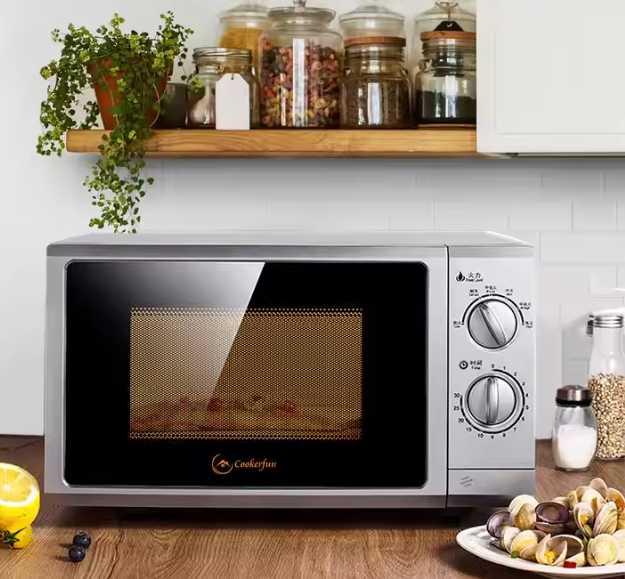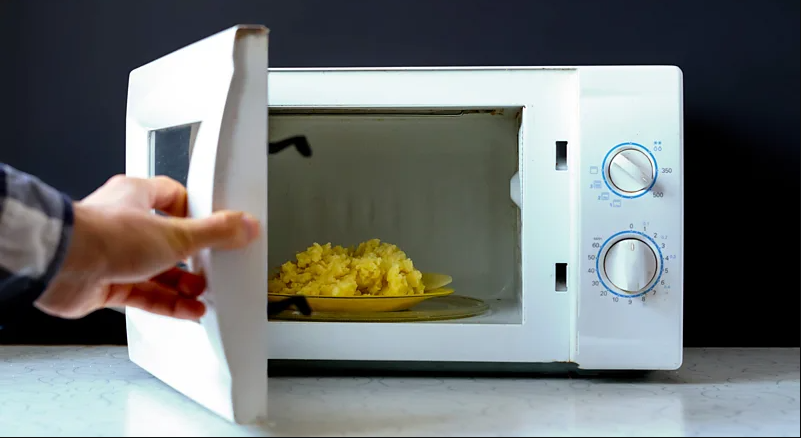Smart Tips for Purchasing Used Microwaves | Save Money and Enjoy Convenience

Content
In a world where convenience is key, microwaves have become an essential kitchen appliance. However, buying a new microwave can sometimes stretch your budget, especially when prices range from $50 to $500 or more for advanced models. Did you know that purchasing a used microwave can save you up to 60% off the price of a new one? You can often find a reliable used microwave for as little as $20 to $150. Additionally, with proper care, a used microwave can continue to serve you effectively for several more years. The average lifespan of a microwave is about 9 to 10 years, making it a smart option to consider a gently used one. Plus, buying used supports sustainability efforts. According to the Environmental Protection Agency (EPA), extending the life of your appliances by just one year can help reduce your carbon footprint significantly. Interested in saving money while making an eco-friendly choice? This guide will help you navigate the process of purchasing a used microwave, ensuring you make an informed, economical decision.
1 Benefits of Buying a Used Microwave

Cost Savings
Used microwaves are often significantly cheaper than new ones.
Eco-Friendly
Purchasing used helps reduce waste and supports environmental sustainability.
Immediate Availability
Used microwaves are often ready for immediate use.
Tested Reliability
Older models with a good track record can offer proven performance.
Detailed Explanation
Buying a used microwave is a cost-effective decision, allowing you to save anywhere from 30% to 60% compared to purchasing a new model. The National Kitchen and Bath Association (NKBA) reports that the average lifespan of a microwave is about 9 years. With many households upgrading for aesthetic or feature-driven reasons, it's possible to find a gently used microwave that still has years of functionality left. Moreover, the eco-friendly benefits are noteworthy. The EPA suggests that extending the life of household appliances can result in reducing waste and lowering greenhouse gas emissions. Finally, many older microwave models from reputable brands like Panasonic, GE, and Sharp have a solid track record for reliability and can continue to perform well with minimal maintenance.
2 Key Factors to Consider When Buying Used Microwave

Age
Choose a microwave that's less than 5-7 years old.
Condition
Look for signs of wear, such as discoloration, rust, or damaged parts.
Power Level
Ensure the microwave has adequate wattage for your cooking needs.
Brand and Model
Prefer reputable brands known for durability.
Detailed Explanation
When evaluating a used microwave, age is a critical factor. Microwaves are generally designed to last around 9 to 10 years, so selecting one that is less than 5-7 years old will likely maximize its remaining lifespan. Additionally, inspect the condition of the microwave carefully. According to Consumer Reports, common issues in older microwaves include worn seals, rust, and malfunctioning controls, which can lead to further problems if not addressed. The power level is another important consideration, especially if you plan to use the microwave for more than just reheating. Models with higher wattage (around 800 to 1200 watts) offer more cooking power and versatility. Lastly, sticking to reputable brands with a history of durability, such as Panasonic, Samsung, or LG, can ensure you're purchasing a microwave that will continue to perform well even after years of use.
3 Where to Find Quality Used Microwaves

Online Marketplaces
Search platforms like Craigslist or Facebook Marketplace.
Local Appliance Stores
Some stores specialize in selling refurbished microwaves.
Second-Hand Shops
These stores often carry gently used appliances.
Auctions and Estate Sales
Great for finding well-maintained, used microwaves.
Detailed Explanation
Online marketplaces are a popular option for finding used microwaves, offering a wide variety of models at competitive prices. For example, eBay reported over 2 million home appliances sold through their platform in the last year, highlighting the vast selection available to buyers. However, purchasing online requires caution—thoroughly vet the seller and request detailed photos and information about the microwave’s history. Local appliance stores that specialize in refurbished goods can be another excellent source, often providing limited warranties or return policies, adding peace of mind to your purchase. Therefore, second-hand shops and thrift stores may occasionally offer well-maintained microwaves at bargain prices, though selection may vary. A report by ThredUp suggests that the second-hand market for home goods is expected to grow by 24% over the next few years, reflecting a shift towards more sustainable purchasing habits. Auctions and estate sales can also be valuable resources for finding high-quality used microwaves, often from homes where the appliances were well cared for. These venues allow you to inspect the items in person and potentially score a premium brand microwave at a fraction of its original cost.
4 Tips for Inspecting a Used Microwave

Test the Microwave
Run a quick test to ensure it heats evenly and properly.
Check for Damage
Look for cracks, rust, or other physical damage.
Examine the Door Seal
Ensure the door closes securely and seals properly.
Look for Energy Efficiency Labels
Confirm the model is cost-effective to run.
Detailed Explanation
Inspecting a used microwave before purchase is crucial to avoid future repair costs and ensure the appliance functions as expected. Running a quick test is one of the most effective ways to evaluate its performance. During the test, pay attention to how evenly the microwave heats food and whether it makes any unusual noises. According to Consumer Reports, microwaves that heat unevenly or make loud noises may have underlying issues that could require costly repairs. Also, check for any physical damage, such as cracks, rust, or dents, as these can impact the microwave's functionality and safety. The door seal is another critical component; it should close securely and form a tight seal to prevent radiation leakage. The U.S. Department of Energy recommends looking for Energy Star certification on microwaves, which use 10-20% less energy than standard models. Ensuring the microwave has this certification can lead to significant energy savings over time.
5 How to Maintain a Used Microwave

Regular Cleaning
Wipe down the interior and exterior after each use.
Monthly Deep Clean
Use a microwave-safe cleaner to prevent buildup and odors.
Check for Wear and Tear
Regularly inspect the door seal and control panel.
Use Microwave-Safe Containers
Only use containers designed for microwave use.
Detailed Explanation
Proper maintenance of a used microwave is essential to prolong its lifespan and ensure consistent performance. Regular cleaning is one of the simplest and most effective maintenance tasks. After each use, wipe down the interior and exterior with a damp cloth to remove any food particles or spills. The Association of Home Appliance Manufacturers (AHAM) suggests that regular cleaning can improve a microwave's efficiency and prevent lingering odors. Performing a monthly deep clean using a microwave-safe cleaner helps to prevent the buildup of grease and food residue, which can lead to unpleasant smells and reduced performance. It’s also important to regularly inspect the microwave for signs of wear and tear, particularly around the door seal and control panel. Over time, these components can wear out and may need to be replaced to ensure the microwave operates safely. Lastly, always use containers that are specifically designed for microwave use to avoid damage to the appliance and ensure your food is heated safely.
Closing Remarks
Choosing a used microwave can be a smart and budget-friendly decision that benefits both your wallet and the environment. By carefully evaluating your options and understanding key factors, you can find a reliable appliance that meets your needs and supports sustainability. Remember, with a little research and thoughtful consideration, you can enjoy significant savings while contributing to a greener planet. Make informed choices and embrace the advantages of buying used to maximize value and minimize your environmental impact.
Faqs
What should I look for when buying a used microwave?
How can I ensure a used microwave is in good working condition?
What are the benefits of buying a used microwave over a new one?
How do I test a used microwave before purchasing?
What are common issues to check for in a used microwave?
How can I find reliable sellers for used microwaves?
What maintenance should I perform on a used microwave?
Are used microwaves energy-efficient?
Leave a Comment
